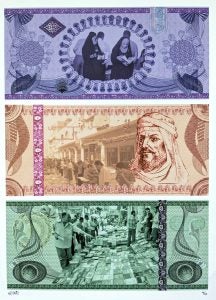
Professor Joseph Sassoon discusses the durability of authoritarianism and the decline of American predominance in the years following the Iraq War.
The American invasion of Iraq in 2003 was not an isolated episode—as interventions by superpowers, have been a recurring feature in the contemporary history of the Middle East and its authoritarian trajectories. Even so, the American invasion stands out in terms of its scale and the reach of its aftermath. The events of 2003 have influenced Arab regimes and societies far more than other wars or softer forms of global involvement—and in ways that remain more distinct today.
The fallout and lingering effects of the American invasion included regional polarizations, securitization, sectarian/ethnic manipulation, transferred counterinsurgency practices, and the expansion of carceral systems. Although Middle Eastern regimes varied in their capacity to translate their learning in the face of social and geopolitical pressures, these fallouts found unique expression in the “rogue states” that were targets of American democratization campaigns and played a key role in autocratic revival and well-being post-2011.
Historically, western interests in the Middle East have hardly been homogenous. U.S. foreign policy found its way into combatting Soviet (read communist) influence and preserving American oil interests. Beyond maintaining the political stability of allies and the region as a whole, core interests also included economic liberalization through international financial actors like the IMF and World Bank and political liberalization through the promotion of democratic values and human rights. Political players in the region learned how to navigate these contrasting pressures and turn constraints into opportunities. Even so, an invasion of this scale was unprecedented, and Arab leaders and bureaucrats were equipped to face neither the American hegemon nor popular threats to their rule should they align themselves with the occupying force.
The positions of senior figures in various Arab establishments reflected a great deal of uncertainty in the immediate aftermath of the invasion. A patent line of ambiguity, for example, emerged in the Syrian narrative. On the one hand, Syrian officials described American actions as “genocide,” “terror,” and “war crimes,” and expressed their approval of suicide missions against the United States. On the other hand, they welcomed a visit from Colin Powell and signaled to observers that Syria was ready to commit to further reforms, albeit on a gradual and restricted scale.
Among the most noticeable and immediate consequences of Saddam Hussein’s toppling was the Libyan nuclear disarmament. This was Gaddafi’s gambit to set the record straight with the United States, particularly given the sanctions on Libya and the U.S. pursuit of banned weapons. But at the same time, Libya denounced the wide mismanagement of Iraq’s daily affairs and “bloody operations” like the killing of Uday and Qusay Hussein.

Iran took the opposite approach, doubling down on nuclear weapons, which it considered the only guarantee against foreign intervention. The regime capitalized on the anti-U.S. sentiments prevalent across the region—which have contributed to the election of conservative leaders—to justify its growing domestic repression and military involvement in Lebanon. As Iran’s intentions were revealed, other Arab countries followed suit, and by the end of 2006, Algeria, Egypt, Morocco, Saudi Arabia, Tunisia, and the UAE had all declared their intentions to acquire a “nuclear capability for civilian purposes.”
Post-2006: Doubling Down on Authoritarianism
While the United States was well-prepared for a military invasion, it was ill-equipped for the administration of Iraq. As the U.S.-occupation gave rise to various ideological groups, the insurgency expanded into a prolonged and vicious conflict that resulted in the large-scale displacement of Iraqis. Despite setting up key institutions of Iraqi democracy, the U.S. was compelled to gradually deprioritize democratic influences as it lost control of the security situation.
Divisions grew, with two particularly trendsetting polarizations taking place in the mid-2000s: those between Sunnis and Shi’as and between anti-American and anti-Iranian camps. The former, based on sectarian divisions, was due to the de-Baathification and dissolution of the army, followed by insurgency, then civil war (2003–2008). The latter did not fall neatly along the lines of Arabs and non-Arabs. Instead, what emerged was more of a “New Arab Cold War” that revolved around the representation of “Arab interests” between states (e.g., Egypt, Jordan, and Saudi Arabia) and “radical” non-state actors (e.g., Hezbollah and Hamas) that stemmed from social movements appealing to an Arab-Islamic narrative.
By 2005, Syria’s stronger ties with Iran became critical in repositioning the state’s relations and policies with its neighbors, and all attempts to isolate Syria failed. Similarly, Gaddafi gained significant confidence following Iraq’s Civil War. He defended the “resistance” in Iraq and, by 2007, backed the Iranian nuclear project (even though it contradicted his own earlier stance). In response to social pressures, Gaddafi would fall back on anti-U.S. rhetoric.
Iran emerged as the major winner of the invasion, with its authoritarian stance faring better given the country’s ideological, economic, and geopolitical prominence. In the process, Iran achieved two of its main goals: putting a stop to territorial threats from Iraq and gaining an ally government in Iraq, which it sustained through several spheres of influence, including loyal politicians, covert networks and militias. Iran was also free of its two major regional nemeses—the Taliban and Saddam Hussein—thanks, ironically, to the United States.
Regimes in the Gulf endeavored to maintain intimate ties with Washington, even against the demands of their respective populations. But throughout the 2000s, the GCC established neither high-level diplomatic missions nor embassies in Iraq, and hence fell short in joining the efforts of building stable and democratic statecraft in Iraq to check the Iranian influence.
By the end of the 2000s, Arab regimes employed new mechanisms of legitimation, based on multiple polarizations and on the structures of American militarism. The Arab uprising of 2011—which the dominant perspectives of the 2000s failed to predict—exposed the full spectrum of the regimes’ learning of authoritarianism. Following 2011, regional polarizations evolved into a vacuum in global leadership. The result was the further securitization and militarization of the various camps involved in what would emerge as a new institutional assemblage of regional security.
Key learning in terms of intelligence and security cooperation took place within these alliances. For example, the Abu Ghraib model inspired a number of regimes to adopt supermax prisons as part of their punitive measures. And while the official number of prisons in the region is estimated to be over 1,600, many informal prisons were constructed by non-state actors (e.g., Hezbollah, al-Qaeda, and the Nusra Front) following critical milestones such as 2006 Lebanese war or the 2011 Arab uprisings. Sparking sectarianized conflict, a technique used in the past by Arab regimes, became a key tool that helped these groups thrive and also served as a defensive securitization tactic.
Authoritarianism is rising globally and remains strong in the region. This is supported by recent findings from the Arab Barometer, which measures social, political, and economic attitudes across the region. A 2022 Arab Barometer survey of 23,000 participants across nine Arab countries and the Palestinian territories showed that the “majority of citizens across the Arab world are losing faith in democracy as a system of governance to deliver economic stability.”

Newspaper and stitch collage by Jennifer Vickers
Courtesy of the Al-Mutanabbi Street Starts Here project
CONCLUSION
The American invasion in 2003 was a critical juncture point that altered both the U.S. hegemony and the regional balance of power for the following two decades. It could be argued that the invasion helped sustain the durability of authoritarianism in the Middle East—albeit in disproportionate ways. While the fall of Saddam’s regime made each state in the region liable to domestic and international pressures to reform, these regimes—already remarkable in their authoritarian resilience—adapted well. As the repercussions of American intervention and the dynamics of instability and war in Iraq unfolded, this resilience allowed them not only to survive threats at home but also to reap benefits from the regional insecurity left by the United State—and resulted in the clear decline of American predominance in the region.
*Joseph Sassoon is a professor of history and holds the Sheikh Sabah Al Salem Al Sabah Chair at CCAS. The research for this article was conducted with Motasem Abuzaid, an alum of the MAAS program and current PhD student at St Antony’s College, Oxford.
This article was originally published in the Spring/Summer 2023 CCAS Newsmagazine.